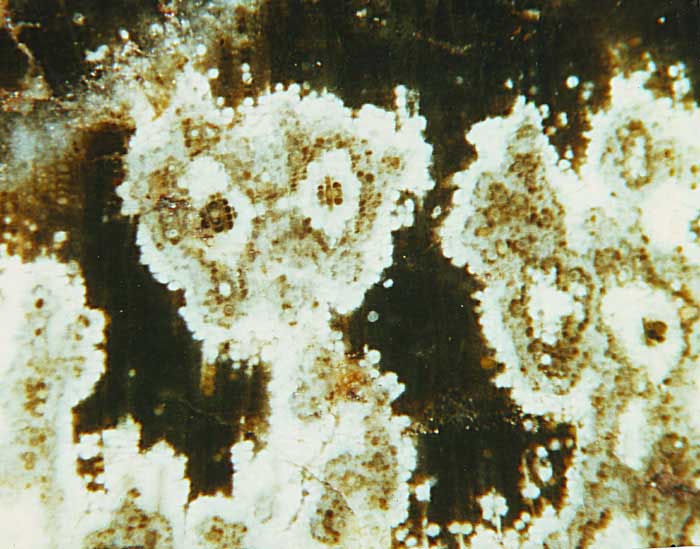Silicified wood
Wood came into existence with the surprisingly rapid evolution of the Higher Plants in the Devonian. Petrified wood is one of the most common types of fossils. It comes
nearly always as silicified wood, often so thorougly silicified that it
can be cut and polished like chert and agate. There
are no well-defined boundaries separating the fields covered by the
terms fossil wood, chert, and agate.
Fossil wood can be a constituent of chert, and agates can be found
within chert and fossil wood.
Another vague line of separation is the one between wooden and
other stems. In very young calamites, wood makes a negligible fraction
of the stem but it is predominating in larger specimens. The composite
structure of the trunks of the big
tree ferns is usually not regarded as wood but other composite trunks
as those of the seed ferns are composed of separate wood strands of
various sizes and shapes. In
view of these facts, one should not take the subdvision into categories
too seriously. Some of the present contributions could well fit into
both Fossil
Wood News and
Permian
Chert News on this website.
Coniferous-type fossil wood is difficult or even impossible to assign
to a certain species. It is summarized under the term Dadoxylon. With
evenly dark aspect it is regarded as less interesting
unless branches or the seldom preserved central pith are seen. It may
become interesting in case of damage inflicted on the wood in the live
or dead tree, which is not rare, and also by enigmatic patterns formed
during silicification, which still give rise to wonder and
misinterpretation.

Silicified coniferous wood with conspicuous aspect resulting from
differential silicification.
Bleaching at much later times as a possible explanation proposed elsewhere can be ruled
out by own observations
on several similar samples.
Sample found among gravel
near Kyffhäuser Mountains, Germany,
uppermost Carboniferous,
provided by W.+G.
Etzrodt, Borxleben.
